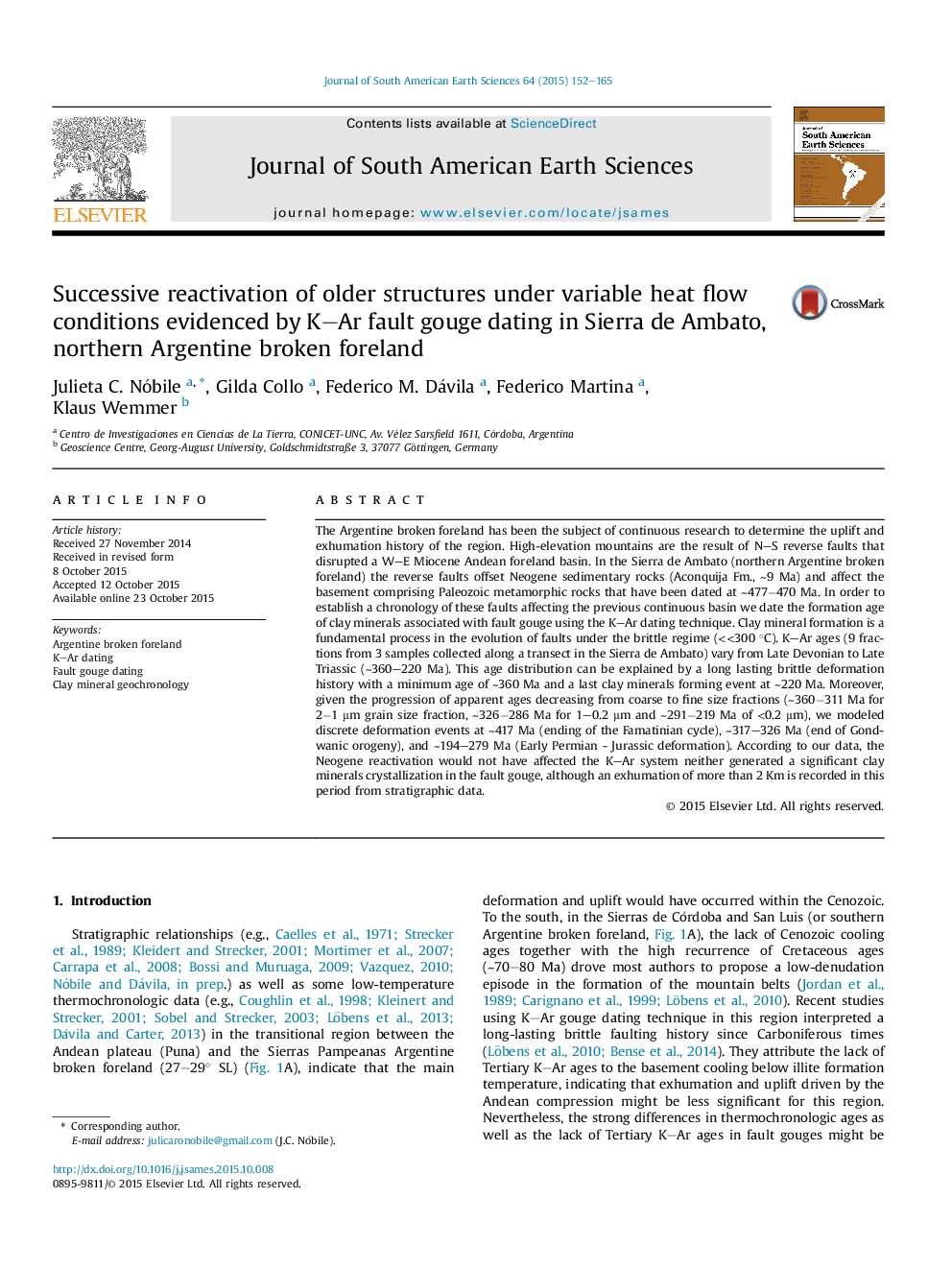| کد مقاله | کد نشریه | سال انتشار | مقاله انگلیسی | نسخه تمام متن |
|---|---|---|---|---|
| 4682115 | 1348894 | 2015 | 14 صفحه PDF | دانلود رایگان |

• Clay mineral formation within a fault zone was dated using K–Ar method.
• We established a chronology of faulting in Ambato range by modeling discrete deformation events.
• No Cenozoic ages were obtained.
• A depth-time modeling was used to explain the lack of Cenozoic ages with a low thermal regime.
The Argentine broken foreland has been the subject of continuous research to determine the uplift and exhumation history of the region. High-elevation mountains are the result of N–S reverse faults that disrupted a W–E Miocene Andean foreland basin. In the Sierra de Ambato (northern Argentine broken foreland) the reverse faults offset Neogene sedimentary rocks (Aconquija Fm., ∼9 Ma) and affect the basement comprising Paleozoic metamorphic rocks that have been dated at ∼477−470 Ma. In order to establish a chronology of these faults affecting the previous continuous basin we date the formation age of clay minerals associated with fault gouge using the K–Ar dating technique. Clay mineral formation is a fundamental process in the evolution of faults under the brittle regime (<<300 °C). K–Ar ages (9 fractions from 3 samples collected along a transect in the Sierra de Ambato) vary from Late Devonian to Late Triassic (∼360–220 Ma). This age distribution can be explained by a long lasting brittle deformation history with a minimum age of ∼360 Ma and a last clay minerals forming event at ∼220 Ma. Moreover, given the progression of apparent ages decreasing from coarse to fine size fractions (∼360−311 Ma for 2−1 μm grain size fraction, ∼326−286 Ma for 1–0.2 μm and ∼291−219 Ma of <0.2 μm), we modeled discrete deformation events at ∼417 Ma (ending of the Famatinian cycle), ∼317–326 Ma (end of Gondwanic orogeny), and ∼194–279 Ma (Early Permian - Jurassic deformation). According to our data, the Neogene reactivation would not have affected the K–Ar system neither generated a significant clay minerals crystallization in the fault gouge, although an exhumation of more than 2 Km is recorded in this period from stratigraphic data.
Figure optionsDownload as PowerPoint slide
Journal: Journal of South American Earth Sciences - Volume 64, Part 1, December 2015, Pages 152–165